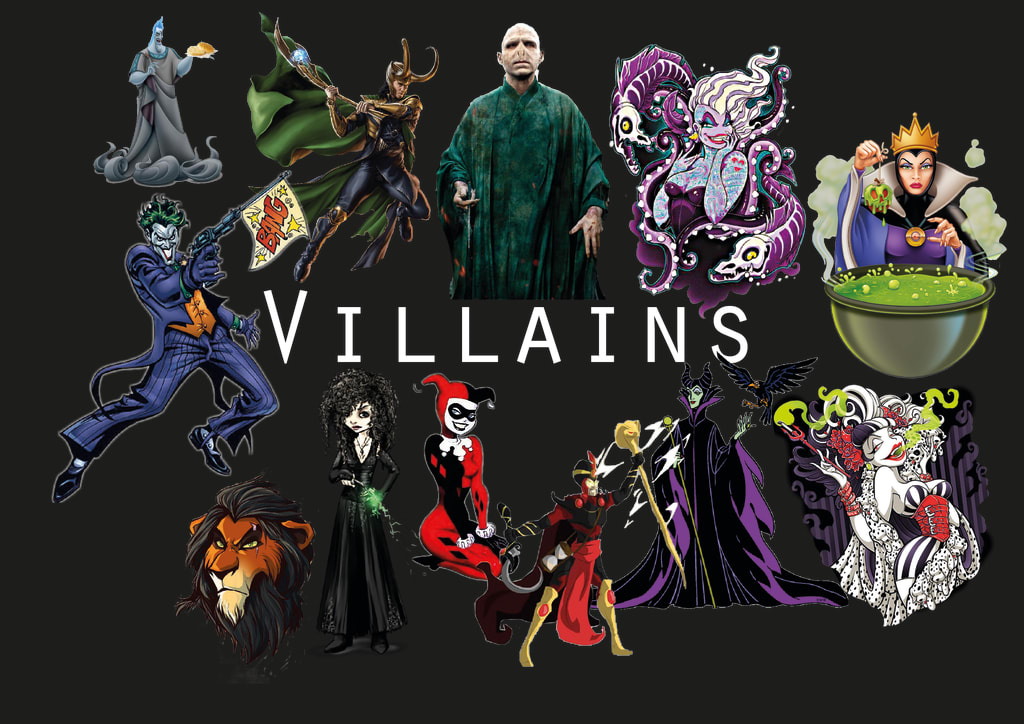
A hero in the story can only be glorified if he battles a convincing and strong villain. Villains usually are the archetype of fiction that embody the fear, evils, loss, anger and darkness of the society. Another sinister feature of the villain is that he carries a kind of mysterious aura around him. Two very common sentiments towards these characters are fear and hate, which could well be transferred from the fictional world into the mind of the reader outside in the real world.
Fantasy fiction has been gaining popularity and seems to attract more admirers each day. It is a form of escapism and is loved because it is set in a subverted environment where anything is possible. However, the genre is not limited to just escapism and has gained popularity among critical readers as well. Fantasy fiction’s complex nature has increased its demand among researchers. According to Mark A. Fabrizi, in Fantasy Literature Challenging Genres, fantasy presents complex topics such as “the nature of good and evil, universal morality, the afterlife, heroism and the quality of one’s character, the role of the individual in the society, and the importance of cultural diversity.”
As a writer, one could easily be fooled to take fantasy as an easy genre, given that the only limit one has in creating a story is their imagination. Brooks Terry warns the writer not to get deluded by the superficial aspects of writing in fantasy fiction. He constantly reminds the writer that the story has to be created on the basis of logic and reasoning, that every character and every aspect of the story has a significant meaning without which the reader will not believe in the world created.
Karin Kokorski in her paper “I want more!” The Insatiable Villain in Children’s Literature and Young Adults’Fiction describes the villain and its characteristics. She states that the villains are formed in a black and white pattern who possess all the evils in the world, evil in its purest form. Villains are known for being bullies, as well as the epitome of destruction, cruelty, and so on. These characters do not embody characteristics of empathy, moral values etc. This is the reason why they are used to create anti-social elements in the story. Villains play an example of what is not expected from an individual in the society. However, this notion has been challenged in the recent Radio 4 broadcast on The Villain in Six Chapters. Recently, it has been claimed that there are more and more people sympathising with the villains, saying that not every villain is evil just for the sake of it. These characters have more depth than they are given credit for.
Ashley Stokes in 'Plotting a Novel' clearly states that a plot has a completely different meaning for a writer compared to a reader. While the reader can rely on the plot of a novel to know what happens in the story, the writer discovers the process and structure of the creative piece through a plot. Andrew Melrose suggests that a character is the main feature of the story and carries the plot with them. Therefore, it is important for a writer to give their time to the character, to understand what the character likes or dislikes, to understand the most innate behaviour of the cast of the novel so that the story flows naturally. This will allow the reader to see and understand the character just as clearly as the writer.
According to Nancy Kress in Dynamic Character: How to Create Personalities That Keep Readers Captivated, writers have the tendency to put lots of effort and time on creating the protagonist of the story. She suggests it is not carried on the same way for the villains and hence they turn out to be one-dimensional. Unlike the protagonist, they do not evolve in the story, nor do they show any other characteristic apart from being a part of the conflict for the story. Thus, becoming boring, stereotypical and even at times funny to read. She has provided five types of villains who fit into certain plot structures.
Laura DiSilverio, in her article 6 Ways to Writer Better Bad Guys,gives tips on creating villains that do not end up being boring. She suggests that empathy towards the villain is a good tool to use as it provides motives to the villain’s actions, there is a backstory and the reader understands the villain just as much as he would understand the hero. Abstract ideas for the villain such as a corporate team can be experimental and may seem interesting, however, this abstract idea too needs an embodiment in the form of a face or a person or a creature, otherwise the villain would not be as interesting. Even the absence of the villain in a story where the intention is to create mystery, there should be some proxies or some signposts towards the actions of the villain to keep the reader interested in the story overall. She also suggests that total evil characters can be stereotypical and today’s reader can get bored of it as he is too predictable. The villain should be as smart or in fact maybe even smarter than the hero to create tension in the plot. In the case that the villain is a friend or someone close to the hero, the tension should be very strong, and could also be used as a plot twist. For a supernatural villain, their supernatural aura should be personified to a quintessential level so as to create an interesting character. After all, one of the motives of a villain in the story is to create struggle or conflict for the hero, to stop the hero from reaching his goal.
James Bonnet in his article Great Characters – Their Best Kept Secrets signposts the writer towards this very goal. He states that a great character is great because of its extraordinary nature. He points out ‘dominant traits’ being a useful tool to create a memorable character, this dominant trait has to be made ‘quintessential,’ in order to bring out the best in the story. By doing so, the readers get an opportunity to connect a characteristic to this character and is able to personify him/her in their imagination. A feature for the villain could be fear, the villain could be the most fearful being in the fictional world. An example for this is J.K Rowling’s character Lord Voldemort, he was feared so much that the famous lines ‘He who must not be named,’ and ‘You know who,’ are used even by the readers to refer to him.
In some fantasy works, the setting or the landscape can function as a character at some levels. Fantasy gives the opportunity to create a world which is different from the world we live in. In his book, Dragons Be Here: Exploring Fantasy Maps and Settings, Stefan Ekam, gives an overview on creating a landscape for the Dark Lords or the antagonists of the story. He suggests that the landscape in the area where the villains reside are not very attractive, dull and definitely not meant for tourists. The setting of this region showcases the innate characteristics of the villain. But he reminds the reader that this is because the land itself is a victim of the dark creature living in that region. It could be the victim of a magical spell or the victim of industrial wastes, etc.
Villains and fantasy fiction are among the prominent features of literature, and have garnered further attention from audiences in the recent years. Villains are complex characters to write and the plot in a fantasy fiction needs to be plausible and effective. Reader satisfaction can be achieved by developing a realistic and fully rounded character within a narrative.
About the Creator
Aarushi Shetty
MA Creative Writing/ BA (Hons) English and Creative Writing
Published in Popshot Magazine, The Quiet Reader and CovWords Magazine






Comments
There are no comments for this story
Be the first to respond and start the conversation.